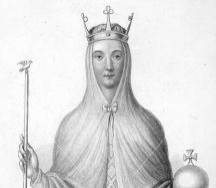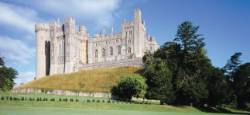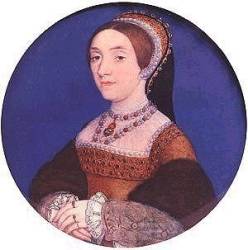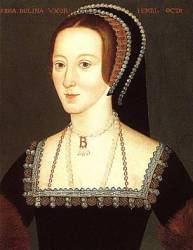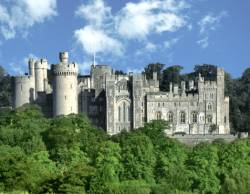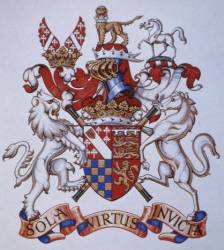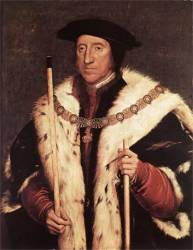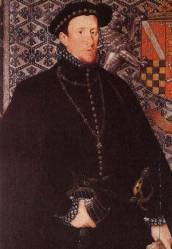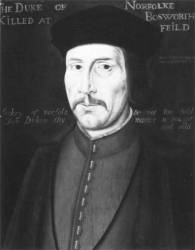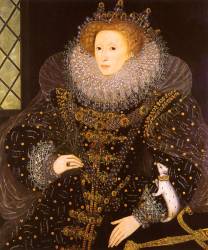

 Queen Adela
Queen Adela 


General Notes
Second wife of Henry I.
Adeliza, of Louvain (b. 1103-23 Apr. 1151), who married firstly, Henry I, King of England and secondly William D'Aubigny (1109-12 Oct. 1176);
On January 29, 1121, King Henry I married Adeliza, daughter of Godfrey, Count of Louvain, but there were no children from this marriage. Left without male heirs, Henry took the unprecedented step of making his barons swear to accept his daughter Empress Maud, widow of Henry V, the Holy Roman Emperor, as his heir.
Adeliza of Louvain (1103-1151) was queen consort of England from 1121 to 1135, the second wife of King Henry I of England. She was the daughter of a French Count, Godfrey of Louvain.
She married King Henry I in 1121 when she is thought to have been aged somewhere between fifteen and eighteen; he was fifty three. It is believed that Henry's only reason for marrying again was his desire for a male heir. (Despite holding the record for the largest number of illegitimate children of any British monarch, Henry's only legitimate male heir had died in 1120.) Adeliza was reputably quite pretty, and Louvain and England had a mutual enemy in Flanders; these were the likely reasons she was chosen. However, no children were born during the almost 15 years of the marriage.
When her husband died in 1135, Adeliza lived as a nun at Wilton, near Salisbury. As she was still young she came out of mourning some time before 1139 and married William d'Albini, who had been one of Henry's chief advisors. She brought with her a queen's dowry, including the great castle of Arundel, and King Stephen created d'Albini Earl of Arundel. Seven of their children were to survive. Among the descendants of this marriage came two girls destined to become tragic queens; Anne Boleyn and Catherine Howard. Adeliza spent her final years in Flanders in a convent.
One of Adeliza's brothers, Jocelin, came to England and married Agnes de Percy, heiress of the Percy family. Their children took their mother's name, and their descendants include the medieval Earls of Northumberland.
Retrieved from "http://en.wikipedia.org/wiki/Adeliza_of_Louvain"
ARUNDEL CASTLE
There is nearly 1,000 years of history at this great castle, situated in magnificent grounds overlooking the River Arun in West Sussex and built at the end of the 11th century by Roger de Montgomery, Earl of Arundel.
The oldest feature is the motte, an artificial mound, over 100 feet high from the dry moat, and constructed in 1068: followed by the gatehouse in 1070. Under his will, King Henry I (1068-1135) settled the Castle and lands in dower on his second wife, Adeliza of Louvain. Three years after his death she married William d'Albini II, who built the stone shell keep on the motte. King Henry II (1133-89), who built much of the oldest part of the stone Castle, in 1155 confirmed William d'Albini II as Earl of Arundel, with the Honour and Castle of Arundel.
Apart from the occasional reversion to the Crown, Arundel Castle has descended directly from 1138 to the present day, carried by female heiresses from the d'Albinis to the Fitzalans in the 13th century and then from the Fitzalans to the Howards in the 16th century and it has been the seat of the Dukes of Norfolk and their ancestors for over 850 years. From the 15th to the 17th centuries the Howards were at the forefront of English history, from the Wars of the Roses, through the Tudor period to the Civil War. Among the famous members of the Howard family are the 2nd Duke of Norfolk (1443-1524), the victor of Flodden, Lord Howard of Effingham, who with Sir Francis Drake repelled the Armada in 1588, the Earl of Surrey, the Tudor poet and courtier, and the 3rd Duke of Norfolk (1473-1554), uncle of Anne Boleyn and Catherine Howard, both of whom became wives of King Henry VIII (1491-1547).
These were politically dangerous times: the 'Poet' Earl was executed in 1547; his father, the 3rd Duke of Norfolk only escaped the death penalty because King Henry VIII died the night before the execution was due and the 4th Duke (1536-72) was beheaded for plotting to marry Mary Queen of Scots. There have been two cardinals and a saint in the Howard family; St Philip Howard, 13th Earl of Arundel (1557-95) died in the Tower of London for his faith. By contrast, his son, the 'Collector' 14th Earl (1585-1646), as his nickname suggests, was responsible for many of the treasures which can be seen today. The results of all this history are concentrated at the Castle, which houses a fascinating collection of fine furniture dating from the 16th century, tapestries, clocks, and portraits by Van Dyck, Gainsborough, Mytens, Lawrence, Reynolds, Canaletto and others. Personal possessions of Mary, Queen of Scots and a selection of historical, religious and heraldic items from the Duke of Norfolk's collection are also on display.
During the Civil War (1642-45), the Castle was badly damaged when it was twice besieged, first by Royalists who took control, then by Cromwell's Parliamentarian force led by William Waller. Nothing was done to rectify the damage until about 1718 when Thomas, the 8th Duke of Norfolk (1683-1732) carried out some repairs. Charles Howard, the 11th Duke (1746-1815), known to posterity as the 'Drunken Duke' and friend of the Prince Regent subsequently carried out further restoration.
-
Individual Additional Information
-
Associated external link media/ind00067.htm
 Details of Queen Adela's family with King Henry I of England
Details of Queen Adela's family with King Henry I of England
Page last modified
This page is within a frameset. View the entire genealogy report of families, or surname index or report summary heritage from 'Moore, Simpson, Ballard Family Tree - England and Scotland to Australia'.
Genealogy Tree.
Copyright © 2011 GenoPro Inc. All rights reserved.
